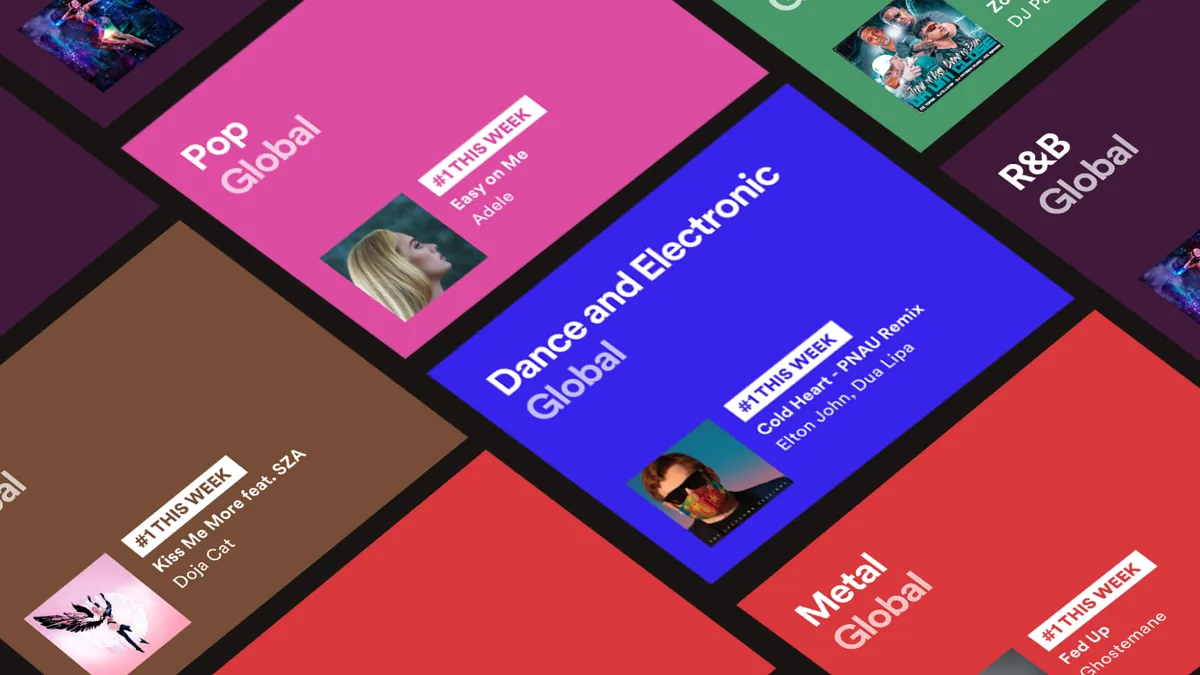In the age of digital streaming, where platforms like Spotify reign supreme, the ability to understand and leverage the metrics behind success has never been more crucial. Among these metrics, the Spotify Popularity Score stands out as a powerful tool that both artists and listeners should pay attention to. This blog explores why the Spotify Popularity Score matters, how it works, and its broader implications for the music industry.
Spotify’s Popularity Index: A Window into Music Trends
One of the most intriguing metrics on Spotify is the Popularity Index, a barometer for what’s hot and what’s not in the music world. This meticulously designed system influences not just what you might listen to next but also shapes the career trajectories of artists worldwide. In an industry where visibility is often synonymous with success, the Popularity Index plays a crucial role in determining which artists rise to the top.
What Is the Spotify Popularity Score?
The Spotify Popularity Score, often referred to as the Spotify Popularity Index, is a dynamic metric that ranks songs, albums, and artists based on their current level of listener engagement and appeal on the platform. This score, which ranges from 0 to 100, encapsulates recent play counts, the frequency of listens, and listener engagement, offering a snapshot of an entity’s current standing within the Spotify universe.
But what exactly does this score represent? In simple terms, it’s a reflection of how well a song or artist is resonating with listeners at any given moment. A higher score indicates that a track is being played frequently, saved to playlists, and shared among users, while a lower score suggests that a song is fading from the public’s consciousness.
How Does the Spotify Popularity Score Work?
At its core, the Spotify Popularity Score is the product of a sophisticated algorithm that considers various factors:
- Recent Play Counts: The more often a track or album is played within a recent period (typically 30 days), the higher its score. This factor emphasizes the importance of maintaining a steady stream of plays over time.
- Listener Engagement: This includes metrics such as how often listeners skip a track, how many times they repeat it, and how frequently it’s saved to playlists. High levels of engagement, particularly saves and repeats, contribute positively to the score.
- Newness of Streams: Newer streams carry more weight than older ones, which means that the Popularity Score is a reflection of current trends rather than historical success. This emphasis on recency ensures that the score remains relevant and up-to-date.
- Global vs. Local Popularity: While the score is influenced by global play counts, local popularity in specific regions can also significantly affect it. This dual focus allows for a more nuanced understanding of how a track is performing across different markets.
The Significance of Spotify’s Popularity Score
The Spotify Popularity Score is more than just a number—it’s a critical metric that can have far-reaching implications for both artists and listeners. Here are some of the key reasons why this score matters:
- Influence on Playlist Inclusions: High-scoring tracks are more likely to be included in Spotify’s curated playlists, such as “Today’s Top Hits” or “Discover Weekly.” These playlists have millions of followers and can significantly boost an artist’s visibility and streams. For emerging artists, making it onto a popular playlist can be a game-changer.
- Impact on Discover Weekly Recommendations: Spotify’s algorithm uses the Popularity Score to tailor individual listener recommendations. This means that tracks with higher scores are more likely to be introduced to new audiences, helping artists reach listeners who might not have discovered them otherwise.
- Search Algorithm Visibility: Tracks and artists with higher scores are more likely to appear in search results, improving discoverability. For artists, this increased visibility can lead to more streams, more followers, and, ultimately, more revenue.
- Career Trajectory and Industry Attention: A high Popularity Score can attract the attention of record labels, industry executives, and even brands looking for collaboration opportunities. In a competitive industry, having a strong digital footprint is crucial for career advancement.
Tools to Track Spotify Popularity: Spotify Trackers
Given the importance of the Popularity Score, it’s no surprise that a variety of tools have emerged to help artists, record labels, and fans track it in real-time. Platforms like artist.tools provide insights into the fluctuating popularity of songs and artists, offering valuable data for marketing and promotional strategies.
For artists, these tools are invaluable for understanding which tracks are resonating with listeners and which ones might need a promotional boost. By closely monitoring their scores, artists can make informed decisions about when to release new music, how to allocate marketing resources, and even which markets to target.
The Spotify Popularity Chart
An extension of the Popularity Index is the Spotify Popularity Chart, a real-time leaderboard of tracks and artists that showcases those at the pinnacle of Spotify’s musical hierarchy. This chart is a reflection of current musical trends and captures the tastes of the global listening community.
The Popularity Chart is not just a list of the most-streamed songs—it also highlights the diversity of genres, languages, and cultures represented on Spotify. Whether you’re a fan of pop, hip-hop, EDM, or indie rock, the Popularity Chart offers a unique glimpse into the world’s musical preferences.
Spotify’s Top Artists and Song Popularity
Delving into the popularity of individual songs and artists reveals a fascinating landscape of musical diversity. Spotify’s immense global reach ensures that its Popularity Ranking is a melting pot of genres, languages, and cultures. This global perspective allows artists from different backgrounds to connect with listeners in new and exciting ways.
For listeners, the Popularity Score offers a way to discover new music that aligns with their tastes. Whether you’re looking for the next big hit or an underrated gem, the Popularity Score can guide you toward tracks that are currently making waves on the platform.
Final Thoughts
The Spotify Popularity Index is a powerful indicator of musical trends and artist visibility on one of the world’s largest streaming platforms. By understanding and leveraging this score, artists and record labels can strategically navigate the digital music ecosystem, maximizing their chances of success.
As the music industry continues to evolve, the Popularity Index will remain a key player in the symbiotic relationship between creators and consumers. For artists, it’s a metric that can make or break a career; for listeners, it’s a gateway to discovering the music that defines our times.

